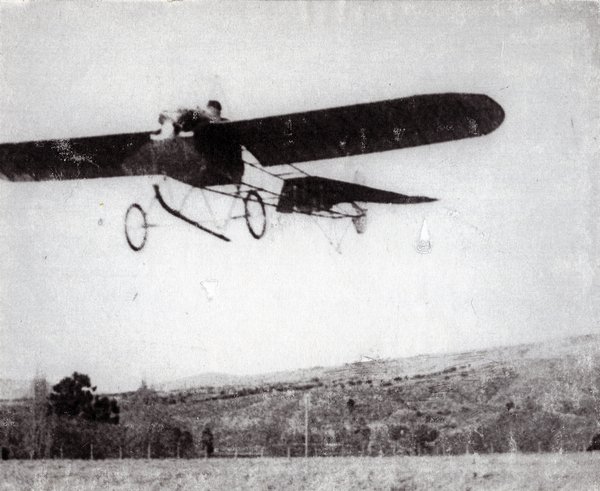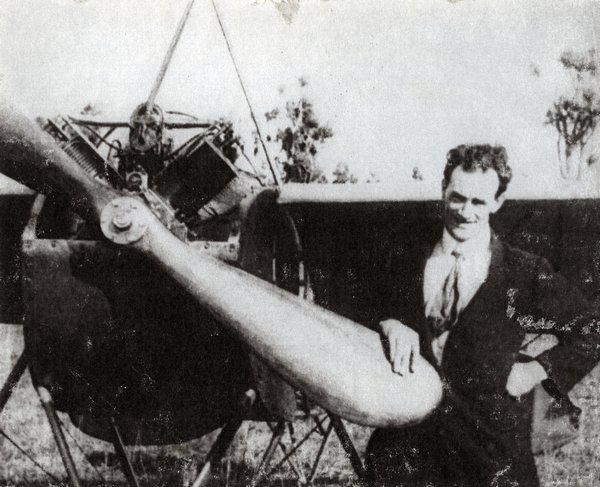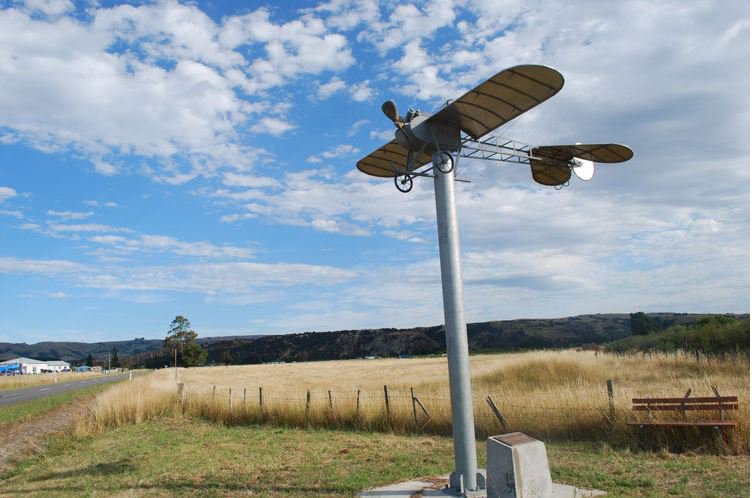The Fisher Monoplane, designed and built by Wellington engineer, Percy Fisher, holds an important place in New Zealand's aviation history as the first plane built in this country to achieve controlled sustained flight.

The Fisher Monoplane in flight. Wairarapa Archives, reference number: 03-149/1.
David Percival Fisher (1882 - 1941) was a mechanical engineer and inventor. Following Louis Bleriot's successful flight across the English Channel in 1909, interest in aviation was high. Fisher was captivated by the engineering challenges involved in flight and was inspired to try his hand at this new technology.
Fisher initially worked with Wellington photographer and aviation enthusiast, Arthur Schaef, who had designed and built a monoplane using an engine imported from England. Fisher rebuilt this engine and together they made several successful uncontrolled flights reaching an altitude of around five meters.
From 1911, Fisher began work on his own monoplane. He based his design upon Bleriot's aircraft, but with several improvements and changes. These included a rounded bonnet and enlarged tail rudders. The wings, rudder and elevator were made from Japanese silk sewn over a wooden frame and varnished to seal the fabric and add stiffness. Cross-wire bracing was used to prevent the frame distorting under pressure. Fisher built a new engine from scratch, using only the aluminium crankcase taken from Schaef’s old imported motor, and managed to achieve an output of 40 horsepower.

Reginald White with the Fisher Monoplane. Wairarapa Archives, reference number: 03-149/3.
Fisher completed his aircraft in November of 1912 and made several test flights at Pigeon Bush Station, near Featherston in the Wairarapa. The windy conditions proved a challenge and after moderate success and a few rough landings he handed pilot duties over to Wellingtonian Reginald (Reggie) White who was keen to try his skill in the cockpit. They shifted the trial site to the more sheltered location of Hurunui-o-rangi, near Carterton and between 21-23 June 1913 White achieved several successful flights, travelling about 800 meters. The plane was reported to have a take-off distance of around 27 meters and travelled at over 60 kilometres per hour when airborne.
Film-maker, Charles Barton, captured the action on film and produced a three-minute compilation. It was shown at the People’s Picture Palace in Wellington to an enthusiastic audience and went on to tour the country.
Fisher's achievement, his passion and innovation, are celebrated with a commemorative plaque and a half-size model of his monoplane, located on Gladstone Road near Carterton.
Vital Statistics:
Length: 7.62m
Span: 7.92m
Wing area: 11.27m2
Tail area: 5.39m2
Weight: 196.9kg
Power: 40hp

A commemorative plaque and a half-size model of Fisher's monoplane are located on Gladstone Road near Carterton.
References
Paul Maxim, Taking flight: the Fisher monoplane and early aviation in the Wellington region (Masterton: Wairarapa Archive, 2003).
'Aviation - Percy Fisher', RNZ National, Arts on Sunday, June 16, 2013. https://www.radionz.co.nz/national/programmes/artsonsunday/audio/2558808/aviation-percy-fisher
'The Fisher Monoplane', Ngā Taonga Sound & Vision, Reference number F7306.
https://www.ngataonga.org.nz/collections/catalogue/catalogue-item?record_id=66579
‘More Successful Flights. Fisher Monoplane at Carterton,’ Evening Post, June 24, 1913.
'Reaching for the sky in Wairarapa', Wairarapa Times-Age, June 6, 2013.
Location
A half-size commemorative model of the Fisher Monoplane is located at Hurunui-o-rangi, Gladstone Road, Wairarapa.
